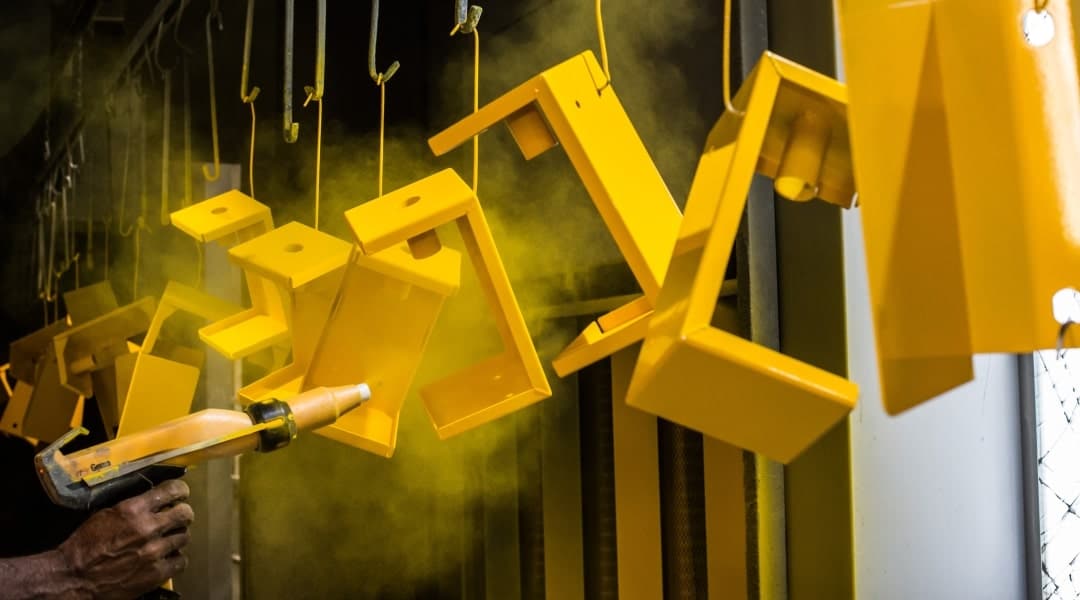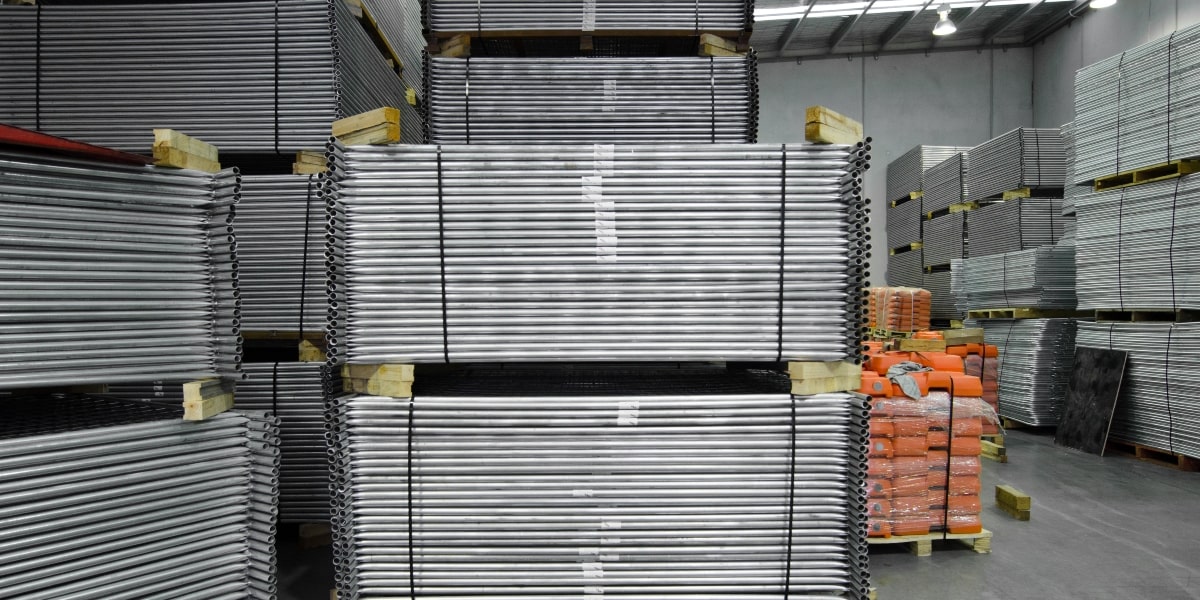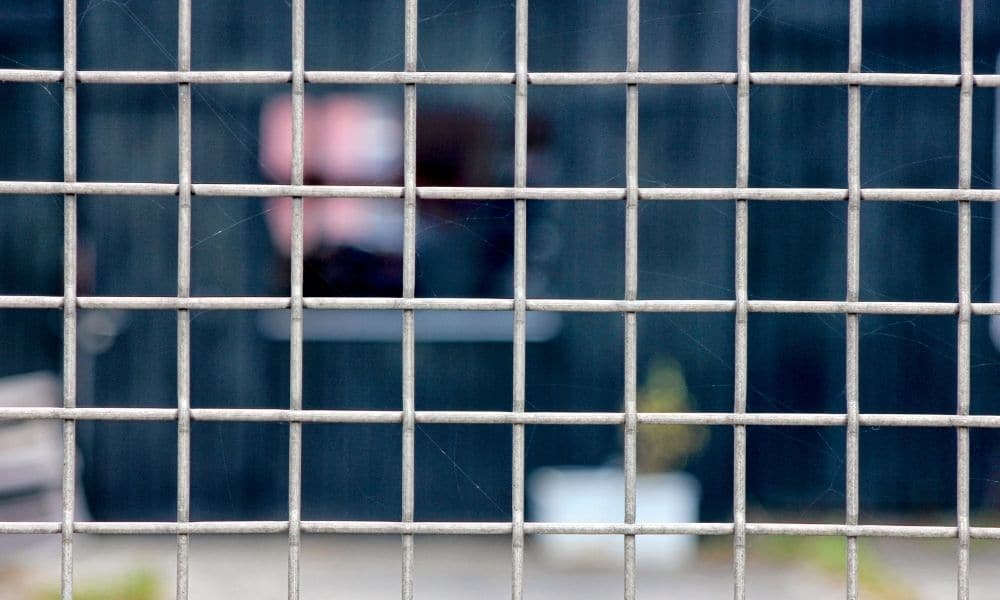Our temporary fencing products are hand-welded and have a hot-dip galvanised finish for optimal strength. But, if you’ve spent any time looking at steel products, you would have frequently heard two terms – “galvanised steel” also known as “hot dipped galvanised steel” and “powder coated steel”.
Both refer to a treatment method applied to the steel which makes it able to withstand the harshest environments and to ensure longevity. But what’s the difference between galvanising and powder coating, and are there benefits of one over the other?
Let’s look at the two different methods.
What is powder coating?

Powder coating is the electrostatic application of a powder to the surface of iron or steel, which is then cured under heat or UV light, to form a protective layer.
Powder coating application is able to create thicker coatings than other liquid coatings such as paint, and because it is a dry product, there’s no running or dripping.
The protective layer formed by powder coating stops destructive materials from reaching the iron or steel surface, ensuring the product will withstand the test of time. There are also pre-treatment methods to enhance the coating’s protection against corrosion.
Powder coatings are also available in a range of options, meaning you can match the powder coating finishes and colours to your branding.
When it comes to decorative steel, powder coating offers more flexibility and is great for use on indoor products.
There are two different powder coating curing processes used for steel:
Thermosets
Thermoset powder coatings contain polymers that chemically react during the baking process. Once cured, the thermoset powder coat cannot be remelted to reshape or remould, making it extremely resistant to high temperatures.
Thermoplastics
Unlike thermoset coatings, thermoplastic coatings do not chemically react in the powder coating process. Because there is no chemical reaction, the thermoplastic pellets soften easily when heated and become more fluid as more heat is applied – hence they are highly recyclable to remould or reshape.
What is galvanising?

Galvanising, sometimes known as hot-dip galvanising, is when iron or steel is dipped into molten zinc, which reacts with oxygen to become zinc oxide and bonds to the surface of the metal to form a protective coating.
Galvanisation offers better corrosion resistance and is useful for outdoor applications or in harsh environments.
The widespread use of galvanisation means it has made steel an affordable material, as well as being low-maintenance, strong and long-lasting.
Pros & cons of powder coating vs. galvanising
Powder coating pros
- Powder coating is highly durable and better for the environment than methods that use liquid paint, due to the lack of solvents in the materials used.
- An unlimited number of colours and textures are available, with powder coating finishes providing long-lasting vibrancy.
- A thick coating can be applied onto the surface without running or sagging, meaning it can be applied to both horizontal and vertical surfaces.
- Faster curing time than liquid coatings when using ultraviolet-cured powder coatings or advanced low-bake thermosetting powders.
- When applied correctly, powder coats can match the durability of galvanisation.
Powder coating cons
- Due to the application process, powder coating is often thick – this means it is not suitable for application on projects that require a thin layer.
- It can also be difficult to apply and to touch up if needed.
Hot dipped galvanised pros
- Galvanised steel or iron is durable, long-lasting, and resistant to rust or corrosion.
- It offers a smooth, uniform finish and is low maintenance.
- Fast production time.
- Galvanised steel is good for the environment as it lasts a very long time and rarely needs to be replaced.
- The galvanising process can be completed under imperfect conditions, unlike other types of steel processes that require exact conditions.
Hot dipped galvanised cons
- It can be more costly (although longer lasting!)
- Not all products can be hot-dip galvanised – it depends on their size, shape, and material.
Which method is best for me?
The advantage of galvanised steel is that it’s particularly suitable for outdoor fencing products. All TTFS’ temporary fencing panels, clamps, stays and gates are hot dip galvanised and hand-welded to improve rust and corrosion protection.
At TTFS we also use powder coating on our products to fit with your brand signage and colours to increase your construction site’s visibility.
This means your galvanised products will have a durable coating that’s resistant to corrosion, while also enhancing the aesthetic appeal of the product.
What about the cost?
Generally, hot dip galvanising a product will be more costly than powder coating. Other factors include the thickness of the coating, the types of materials used, the pre-treatment processes and the current price of zinc.
What happens if you do both methods?
When hot dipped galvanised steel is powder coated, the duplex coating provides an additional level of long-term corrosion protection. The
Duplex process acts as an additional barrier and slows down the rate at which the zinc is consumed.
Speak to the team at TTFS for more information on our fencing products
If you would like to know more about our galvanised and powder-coated temporary fencing products, please contact us today on 1300 535 421 or fill in an enquiry form.


Recent Comments